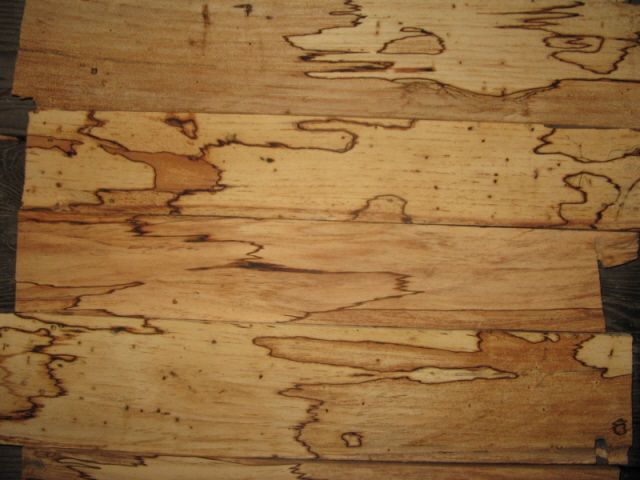Question
I was cutting some firewood today so I could smoke the meats for Christmas dinner, and found a couple of nicely spalted pecan trees. I deal almost exclusively with reclaimed heart pine, and mill it into flooring, but I know that this spalted pecan has some value. I am thinking hard about loading it up and sawing it. The main trunks are probably around 30" across and 18 to 20 feet long. The heart doesn't seem to be spalted much if any, but the sapwood is beautifully spalted.
Spalted wood is something I've never dealt with before. If you folks ran into this, how would you go about it? I don't know if I should cut it into short logs for turning, or long wide 4/4 boards, or …? Is it difficult to dry? Seems like it should be easier than green wood. Who would I market it to? I just don't want to see it go to waste, and there's a good chance I could get a fair amount more of it if I want it.
Forum Responses
(Sawing and Drying Forum)
From contributor K:
Spalted woods are highly prized by wood turners. I wish pecan grew in NJ. I have turned spalted pecan and it's just wonderful. Turners are going to want it green, so shipping can become a problem due to weight. After cutting it to size, it is important to seal the end grain as soon as possible.
I cut some of the firewood logs into boards to see the pattern more clearly, and it has more pattern than most of what I'm seeing on the net. It's wildly colored.
I know spalted wood is not as strong or stable as regular wood. How can I tell how much is too much? There are a few spots I found that are a bit punky, but they seem to be hardening as it dries in the air. I can dig out a little with my thumbnail if I try hard enough. Most of it isn't that bad.

What I suggested to the customer was to cut the logs down the middle so they would fit on the mill. We would then cut 6/4, number each board for book-matching later, sticker ~18", weigh it down to the extreme, then see what happens. It will be 1-4 weeks before we get it sawn. Yours looks beautiful. Let us know how your marketing goes.
I don't know when you would go from calling something spalted to punky, but it will vary within the tree, so you will just have to judge for yourself. I generally think if you can dig it out with a thumbnail, it's too far gone. If your boards would hold a fastener okay, I imagine there's a good many people out there that would love to build something with it. I just wouldn't use it for a high traffic area or something like a load bearing shelf. Putting a slick finish on it may be something else.
There should be no problem with drying the material. The initial rot (spalt) has taken a lot of the tension out, so it should be easier to handle than "good" wood. We had the initial experiences of everyone with pecan. Our early efforts would have made good roller coaster wood. Then we learned to seal the ends, stick everything at about a foot to fourteen inches and put plenty of weight on top. From what we have done, I'd say sticking it close is the key ingredient for straight boards from green pecan. For sound pecan we cut on the 4/4 scale, as some areas may shrink enough to not yield planed 3/4" material if cut on the inch scale and boards wider than about 15 inches may show a little cupping.
Of course our climate is different than yours but we air dried for a while outside under an open shed roof and had a good bit of warped wood and checking. We have a forty foot shipping container and have two dehumidifiers and were going to use it as a natural kiln during the Texas summer months and put several hundred feet of green pecan in it and left the doors open to get rid of the initial rush of moisture before using the dehumidifiers. After a week it seemed to be doing well, so we just left the doors open. In three or four months we had straight boards with just about no cracks or checks at about 10-11% MC. It seems to work about as well in cool weather as warm, just slower. And the sycamore we've cut handled as well as pecan. At first we ran fans to help air circulation and then decided we didn't need them either. As I said, this is with our climate with humidity in the day of usually 30-40% and higher at night.
Pecan is sold as a hickory because it is a hickory. And you talked about wood to smoke meat. Around here there are a number of people who prefer it to mesquite. As far as pricing, we have been getting around three dollars a foot for regular pecan and from three to four bucks is what I've seen other places. From what I've seen of yours you should get more (maybe considerably more) for yours. Spalted wood is a specialty wood with a great deal of variability, so pricing is problematic. Provided yours makes structurally sound members, it puts to shame the spalted pecan I've seen listed on eBay. Hope this has been of some help.